Warehouse Optimization — How to Improve Efficiency and Productivity in Malaysian Warehouses
Warehouse optimization is the key to achieving faster operations, higher accuracy, and lower costs in modern supply chains. In Malaysia’s rapidly industrializing landscape, optimizing warehouse layout, automation, and data systems helps businesses stay competitive and compliant with Industry 4.0 standards. This article explores how technologies like ASRS, AMR, and WMS can transform warehouse performance — and why choosing the right automation partner, such as DNC Automation, makes all the difference.
What Is Warehouse Optimization and Why It Matters?
Warehouse optimization refers to the strategic process of improving how goods, information, and resources flow within a warehouse — all aimed at achieving maximum efficiency and cost-effectiveness. It involves analyzing operations to reduce waste, enhance productivity, and improve accuracy across every stage of warehousing — from receiving and storage to order fulfillment and dispatch.
In Malaysia, warehouse optimization plays a crucial role in supporting industries like manufacturing, e-commerce, and logistics, where operational costs and delivery speed directly affect competitiveness. By optimizing layout design, implementing automation systems, and leveraging data analytics, businesses can achieve higher throughput, better order accuracy, and improved inventory turnover.
What Technologies Drive Warehouse Optimization?
Modern warehouse optimization is powered by a combination of intelligent automation, robotics, and data-driven software. These technologies streamline material flow, reduce manual handling, and ensure continuous operation — all essential for Malaysia’s growing manufacturing and logistics sectors under the Industry 4.0 framework.
ASRS & Shuttle Systems
- Function: Automate the storage and retrieval of pallets, totes, or bins, reducing dependency on manual forklifts.
- Benefits: Maximize vertical and horizontal space utilization, increase picking speed, and ensure high inventory accuracy.
- Prestar Storage System Sdn. Bhd. – Local manufacturer offering high-density racking and ASRS integration.
- XTS Technologies Sdn. Bhd. – Specializes in modular shuttle systems for different warehouse sizes.
- Swisslog – Global leader offering advanced robotic ASRS with integrated software solutions.
AGV & AMR Systems
- Function: Automate material transport between receiving, storage, and dispatch zones. AGVs (Automated Guided Vehicles): Follow fixed routes using magnetic tape, laser, or QR guidance. AMRs (Autonomous Mobile Robots): Navigate freely using LiDAR, cameras, and SLAM mapping.
- Benefits: Improve safety, reduce manual transport time, and adapt to layout changes with minimal reconfiguration.
Robotic Picking & Vision Systems
- Function: Automate order picking and sorting using robotic arms equipped with AI-based vision.
- Benefits: Recognize and handle items of various shapes and materials. Reduce picking errors and increase throughput. Ideal for e-commerce, FMCG, and high-mix, low-volume operations.
IoT, Sensors & Real-Time Monitoring
- Function: Connect every piece of equipment to a centralized data network.
- Benefits: Monitor asset health, environmental conditions (temperature, humidity), and equipment utilization in real time. Enable predictive maintenance, reducing unexpected downtime. Provide end-to-end visibility into warehouse operations for smarter decision-making.
Software Backbone: WMS, WCS & Orchestration Platforms
- WMS (Warehouse Management System): Manages inventory, order processing, and workforce allocation.
- WCS (Warehouse Control System): Directly controls and synchronizes automated equipment such as conveyors, ASRS, and AMRs.
- Integration & orchestration platforms: Solutions like Maestro Orchestrator by XTS Technologies unify all automation layers, providing real-time control, monitoring, and performance analytics through a single interface.

Modern warehouse optimization is powered by a combination of intelligent automation, robotics, and data-driven software
How to Plan a Warehouse Optimization Strategy?
Developing an effective warehouse optimization strategy requires a structured, data-driven approach. It’s not just about adding automation — it’s about understanding your current workflow, identifying inefficiencies, and designing a scalable system that aligns with your operational goals. Below is 5 step framework for companies in Malaysia to plan and implement a high-performing, future-ready warehouse.
Step 1: Audit Current Operations and Pain Points
- Begin by conducting a comprehensive warehouse audit to map existing workflows, equipment, and space utilization.
- Identify recurring bottlenecks such as slow picking rates, congestion at staging areas, or poor space allocation.
- Evaluate labor productivity, material flow efficiency, and error rates in receiving, storage, and dispatch processes.
- The insights from this audit form the baseline for all future improvements and automation planning.
Step 2: SKU / Inventory Segmentation & ABC / XYZ Analysis
- Classify SKUs based on movement frequency (ABC analysis) and demand variability (XYZ analysis).
- High-frequency items (A-class) should be placed in easily accessible zones to reduce picking time.
- Slow-moving or seasonal products can be stored in remote or higher-tier locations.
- Use data analytics to forecast stock levels, ensuring optimal storage allocation and replenishment efficiency.
Step 3: Layout & Flow Design
- Design the warehouse layout based on product flow, order volume, and space constraints.
- Consider narrow aisle racking, mezzanine platforms, or multi-tier shelving to increase storage density.
- Ensure smooth traffic flow between receiving, picking, and dispatch areas — minimizing cross-path movement.
- Incorporate ergonomic workstation design and safety compliance with DOSH Malaysia and ISO 45001 standards.
Step 4: Automation Roadmap & Phased Deployment
- Develop a realistic automation roadmap aligned with business scale and ROI expectations.
- Start with high-impact areas such as conveyor systems, ASRS, or AMR fleets before expanding to full automation.
- Implement in phases to minimize disruption — pilot, evaluate, and scale based on data-driven performance results.
- Integrate systems through a central Warehouse Management System (WMS) and Warehouse Control System (WCS) to ensure interoperability.
Step 5: KPI Setting & Continuous Improvement
- Define measurable Key Performance Indicators (KPIs) such as order accuracy, throughput, picking rate, and space utilization.
- Use real-time dashboards and IoT data to track progress and identify new optimization opportunities.
- Conduct regular performance reviews and adjust layout, labor allocation, or automation parameters as operations evolve.
- Continuous improvement ensures long-term resilience and scalability in response to changing demand or market conditions.
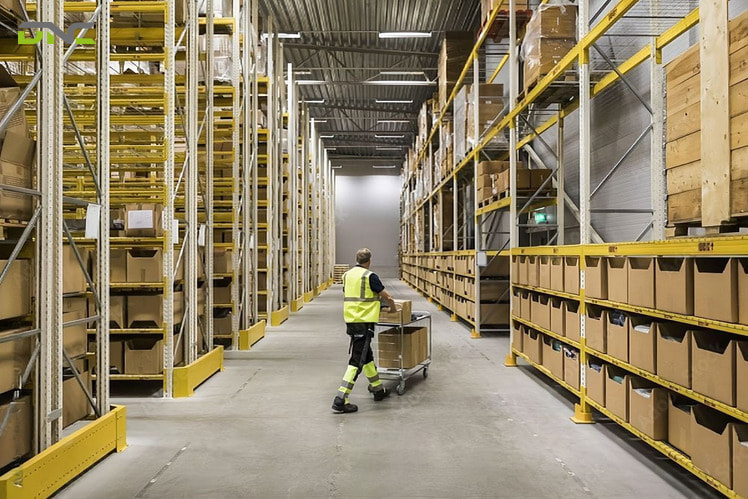
5 step framework for companies in Malaysia to pla
What Are the Benefits of Warehouse Optimization?
Warehouse optimization isn’t just about adding automation — it’s about improving efficiency, visibility, and scalability across every stage of operations. When done right, it delivers measurable business impact that goes beyond cost savings. Here are 5 benefits of Warehouse Optimization:
- Improved Space Utilization and Storage Density: Optimization allows companies to maximize existing warehouse space without costly expansion. Smart slotting and zoning ensure products are stored according to demand frequency, improving pick rates and accessibility.
- Faster Order Fulfillment and Throughput: Integration between WMS and conveyor/AMR systems enables real-time coordination for continuous movement of goods.
- Higher Accuracy and Reduced Operational Errors: Automated picking, barcode scanning, and RFID tracking minimize mispicks and inventory discrepancies. This not only improves order accuracy but also boosts trust in data-driven decision-making.
- Reduced Labor Dependence and Increased Productivity: Automation and better process flow reduce manual handling, allowing workers to focus on higher-value tasks.
- Better Inventory Control and Visibility: Integration with ERP/WMS systems ensures real-time tracking of stock levels, expiry dates, and SKU movement. Businesses gain precise insight into demand patterns and reorder points.
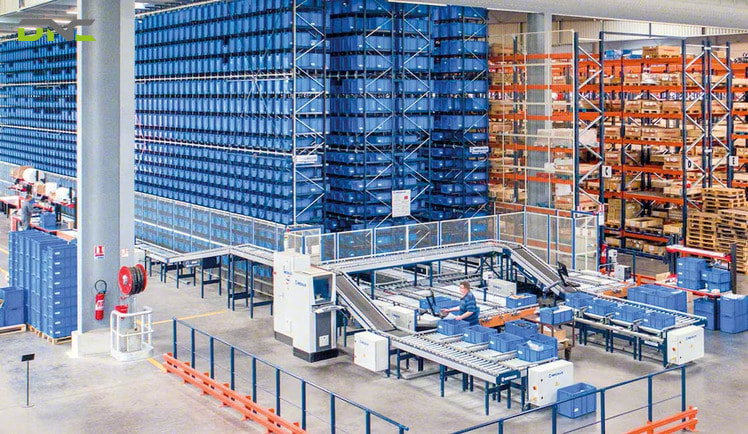
5 benefits of Warehouse Optimization
What Challenges Do Companies Face in Warehouse Optimization?
While warehouse optimization delivers clear benefits in efficiency and productivity, many companies encounter significant roadblocks during planning and implementation — especially in Malaysia, where cost, infrastructure, and integration complexity vary across industries. Below are 4 key challenges businesses typically face:
- High Capital Cost & ROI Uncertainties: Advanced automation systems like ASRS, conveyors, or AMRs require large upfront investments in equipment, integration, and training.
- Legacy System Integration with ERP / WMS / WCS: Many Malaysian warehouses still operate on outdated ERP or standalone systems that can’t communicate with modern WMS or WCS platforms. This lack of integration leads to data silos, order delays, and inaccurate inventory tracking.
- Physical Constraints: Floor Strength, Lighting, Structural Limits: Older warehouses often have limited ceiling height, uneven flooring, or insufficient floor loading capacity — unsuitable for heavy-duty racking or shuttle systems.
- Scalability & Flexibility Under Changing Demands: Demand fluctuations, seasonal peaks, and SKU diversification make rigid systems inefficient over time.
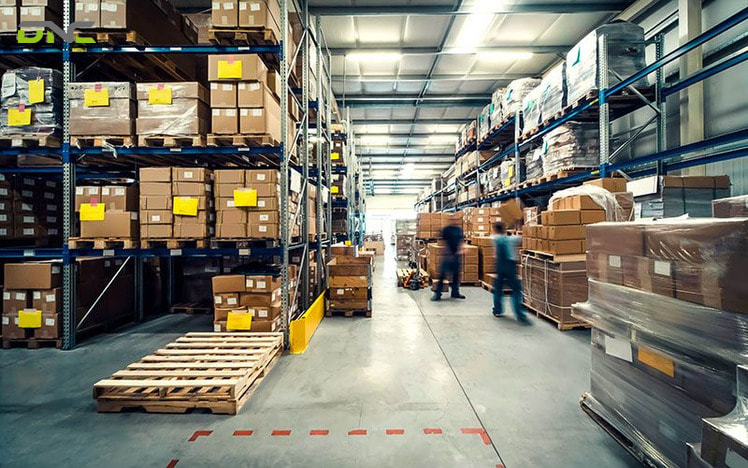
4 key challenges businesses typically face
FAQ: Warehouse Optimization
- How long does it take to optimize a warehouse?
The timeline depends on the scope of the project. A process re-design or layout improvement can take a few weeks, while full-scale automation with ASRS, AMR, and system integration may take several months. A phased approach allows businesses to upgrade gradually without disrupting operations.
- Can warehouse optimization work for small or medium-sized warehouses?
Yes. Warehouse optimization is not only for large distribution centers. SMEs can benefit from solutions like better slotting, improved racking systems, or semi-automated conveyors. Scalable automation technologies now make optimization affordable even for mid-sized operations.
- Do I need to replace my existing WMS or ERP to optimize my warehouse?
Not necessarily. Modern warehouse solutions can integrate with existing ERP and WMS systems through middleware or API connectors. This allows you to enhance efficiency without replacing your current software infrastructure.
- How do I calculate ROI for warehouse optimization?
ROI is typically measured by comparing the cost savings (labor reduction, space utilization, order accuracy, faster throughput) against the total investment. Many companies in Malaysia see positive ROI within 1–3 years when the solution is properly scoped and aligned with operational goals.
- What industries benefit most from warehouse optimization?
Industries such as manufacturing, FMCG, e-commerce, pharmaceuticals, and 3PL logistics gain the most. These sectors handle high volumes, fast turnaround, and strict accuracy requirements — all areas where optimization delivers measurable results.
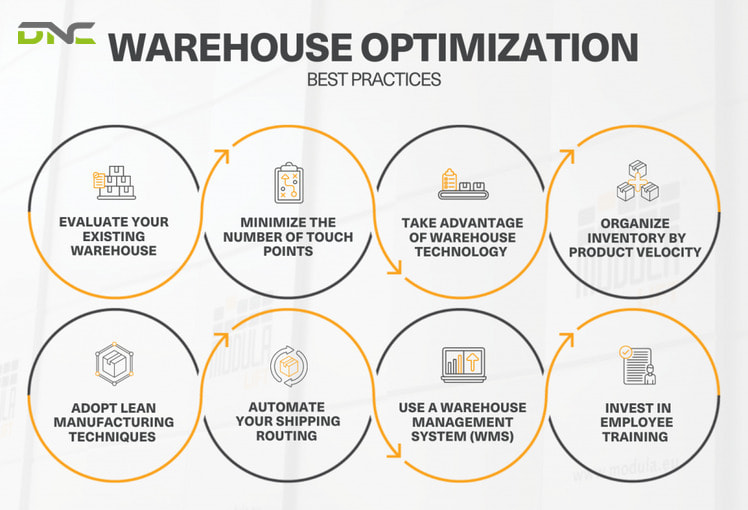
FAQ: Warehouse Optimization
Conclusion
In today’s fast-evolving industrial landscape, warehouse optimization is no longer just an option — it’s a strategic necessity for businesses seeking efficiency, scalability, and long-term profitability. By combining intelligent layout design, automation technologies, and data-driven management, companies can achieve higher throughput, lower operational costs, and greater supply chain visibility.
At DNC Automation, we help Malaysian businesses transform their warehouses into smart, connected environments ready for Industry 4.0. With over a decade of experience in Material Handling, Factory Automation, and Robotics Integration, our team delivers end-to-end solutions — from WMS/WCS implementation to AGV, AMR, and ASRS systems.
Whether you’re optimizing a small warehouse or scaling a full logistics center, DNC provides customized, reliable, and ROI-focused automation solutions tailored to your operation.
- 2 views
- 0 Comment



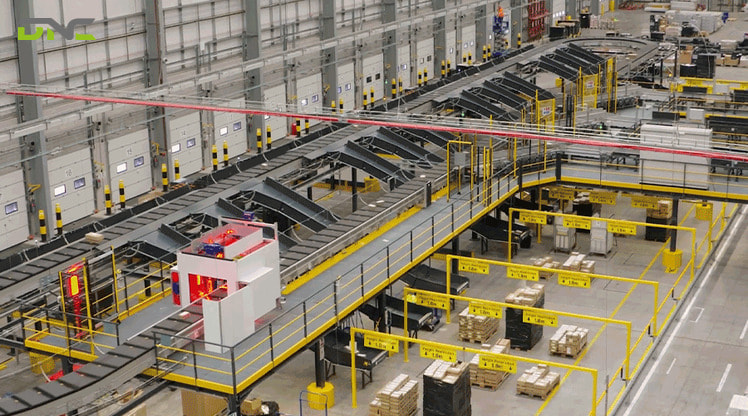
Recent Comments